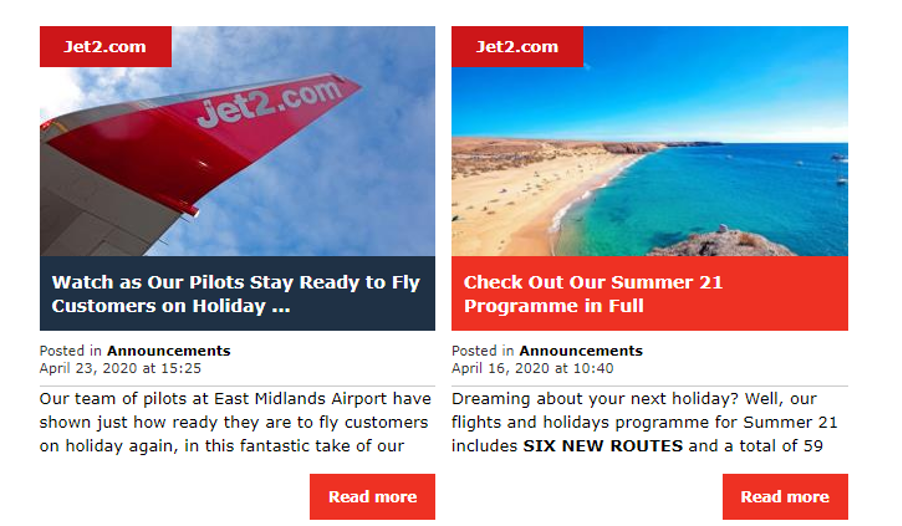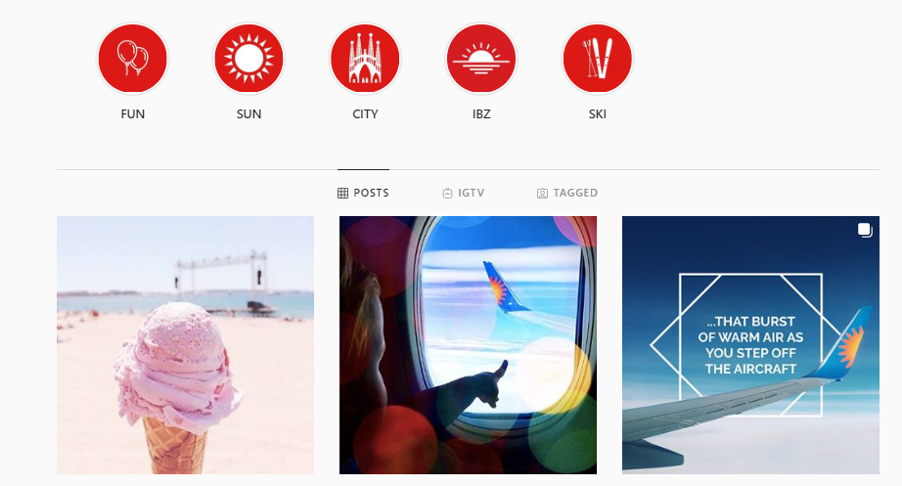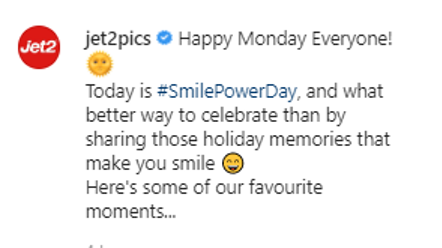Marketing Your Travel Brand After COVID-19
Sun, sea and face masks? Not quite the summer any of us had planned. The covid-19 pandemic has caused a whole wave of disruption for the travel sector. But as airports, hotels and resorts tentatively reopen, how can they market themselves? Should they run those summer 2020 travel marketing campaigns? What are the best ways to reassure potential travellers?
As a leading Belgium marketing agency, we’re always watching brand behaviour on social media. Recently we looked at food brands that adapted brilliantly to covid-19. In this article, we’re diving into the current travel marketing climate, checking out some top campaigns and giving you some tips for rescuing summer 2020.
Photo: Shutterstock
What’s Happening Now?
At the time of writing, European countries are starting to open up for travel. While June sees the lifting of land border checks between European countries, there will be a gradual lifting of the EU travel ban in July with international travellers allowed to enjoy a holiday to Europe. But, of course, this will be staggered and dependent on Covid-19 epidemiology data.
In the words Emmanuel Macron, President of France: “The summer of 2020 will be a summer unlike any other. We will need to watch the evolution of the pandemic to be prepared in case in comes back with renewed strength.”
Summer 2020 Travel Stats
· Many people remain scared to travel not just because of the Covid-19 pandemic but also due to recent riots, civil unrest and financial concerns.
· A survey by RetailMeNot suggests that fear and anxiety will continue to keep many at home this summer. Over 25% of Americans say they are afraid to travel for any reason.
· European destinations expecting tourism declined between 30 and 40% in 2020, compared to 2019.
· According to the same report, France is expected to be the most-heavily impacted European destination, with nearly 38 million fewer inbound visits in 2020.
· Research shows that world recovery of passenger demand to pre-COVID-19 levels is estimated to take 2.4 years (recovery by late-2022), with the most optimistic estimate being 2 years (recovery by mid-2022).
· By June 2020, a collective net loss of $84.3 billion was estimated for Airlines. That’s worse than the $30 billion loss during the financial crisis of 2008-2009.
On a lighter note however, a new survey by The Out of Home Advertising Association of America (OAAA), a trade association representing billboard advertisers, states that 53% of consumers plan to get away on a summer vacation. But, 62% will be planning to shun air travel with road trips up 72% from last summer. 46% of respondents even said they would be willing to drive more than five hours instead of flying to a destination.
How to Make Travel Marketing Work in 2020
So, it’s clear there’s a whole lot of uncertainty. But if you’re marketing hotels, airlines or tours then you will need to make it work. Our team has rounded up the best travel marketing strategies.
#1 Prioritise Digital Engagement
There’s a difference between halting costly travel marketing ads and halting engagement. While saving money on paid advertisements, press releases and high-end video production is a good idea when funds are low, keeping your followers engaged is essential. And that means utilising digital channels effectively. Nihi Sumba, a luxurious beach resort in Indonesia, for instance, is using social media to promote “cool stuff that you would normally do at the resort,” by bringing it to customers “in a tasteful way.”
Leading with the topical tagline “Socially Distance, Wildly Connected” the resort posts regular videos promoting live events such a yoga and relaxation therapies. Managing partner James McBride said: "We’re doing live yoga classes via Instagram. We’re doing chocolate making. We’ve got a magician that is doing magic shows. We’re doing horses that swim in the sea. If we can find a way of filling the void of bringing some happiness to those that know and support us, then we’re going to do it. That’s how you stay top of mind."
Another great example is Club Med, promoters of luxury, all-inclusive holiday packages. Club Med has introduced a new marketing angle, Club Med at Home. This focuses on bringing the Club Med Magic to your home and includes culinary fun, activities for kids, workouts to improve lockdown fitness and more. They’ve created YouTube how-to videos, updated their blog with recipes and included colouring templates for children to enjoy.
Vijay Sharma, General Manager of Club Med South East Asia, said: “Travel and tourism brands need to continue to maintain a line of communication with its guests to drive and build brand loyalty regardless of the environment. In times of uncertainty, it is important that we create open constant dialogues with our guests and continue to be agile and respond to consumers. It is the foundation to build trust and credibility”.
The Club Med Instagram channel also has a Club Med at Home pinned Story tab allowing their 318K followers to access a whole wealth of useful ‘at home’ content including Stories which show step by step how to make delicious treats.
Why This Works:
- It showcases the luxury of the resorts in a practical way, allowing potential guests to engage and visualise themselves there.
- It builds brand loyalty by showcasing the caring side of the brands.
- It shows initiative and that it’s still possible to keep your brand in the spotlight even when tourism is not flowing as usual.
- The post makes good use of hashtags and is informative and concise. The visuals fit perfectly with the essence of Instagram which is all about visual stimuli.
Top tip for brands: Think about what your consumers want from your brand and strive to deliver it in digital form. Restaurants could do live cook-offs while clubs and bars could host live DJ sessions and playlists. All this will stock up business for 2021, if not this year.
#2 Embrace Corporate Social Responsibility
Club Med has also taken the opportunity to improve their corporate responsibility strategy. To honour the hard work of medical staff during the pandemic, Club Med offered 200 free resort stays at Club Med Cherating to the front-liners at Tengku Ampuan Afzan Hospital in Kuantan. This includes a 3 Day 2 Night getaway for 2 adults and 1 child, with the free resort stays valid for one year once domestic travels are permitted. In addition, Club Med also donated 1,000 units of N95 masks and 2,000 units of surgical masks to the hospital, as well as to the Cherating District Police Station. This story was included in their blog as we see below:
We liked how Club Med brought in reassuring tones at the end of the article. Reiterating its impressive 70-year history and promising better times ahead. This is a piece of content that would leave potential guests feeling reassured and ready to make a booking.
Now is also a great time to showcase your own responses to the situation. Jet2 was praised for its handling of the crisis, something they share on their blog. The team were busy throughout the crisis answering social media comments and messages 24/7 and ensuring they communicated with passengers. Appreciating staff on your content and social media channels is a great idea if it echoes public sentiment as is the case here. It also adds trust and authenticity to the mix because potential travellers can see your team and understand you are working hard to get things back on track.
The airline hits all the sweet spots with its content marketing by keeping travellers focused on the reopening of airports and resorts. Their content goes behind the scenes to meet pilots ready to take off and the summer 2021 holiday programme tantalisingly waiting for readers to dive in.
Over on Instagram, Jet2 creates FOMO by reminding people what they love best about summer holidays. Ice cream, that first blast of warm air… it’s evocative and a non-aggressive way of encouraging people to book.
Another travel brand gently tweaking at the FOMO strings is Saga Holidays. Saga has created and shared some beautiful videos on its Facebook page, all with the intention of prompting 2021 bookings. Again, nothing shouty or pushy. Just beautiful imagery and inspiration for potential travellers.
Why This Works:
- Great content is at the centre of all successful brands. Begin with updated and informative web content, engaging and relevant blog articles and span out from there. Remember to address potential concerns or questions in your content.
- Things aren’t normal and they won’t be for a while. So, to try and churn out the same old travel marketing messages is not the best idea. Some people feel nervous, tensions are high, and people are not their usual summer holiday selves. So, it’s necessary to adapt your messaging to the current mood.
- The content shown in these examples was not pushy. It understands that some people are afraid. But it also caters to those who are not. There are no judgements made. It’s informative and tempting.
- The way travel brands have handled the pandemic is the subject of discussion amongst marketers. Whilst some sunk into panic mode and ignored customers, others rose to the occasion and shone. If your travel brand handled it well, now’s the time to share that with the world.
- These travel brands know that people are getting ready to rebook, even if it’s for 2021. They are gently tempting them in with offers for next year whilst reminding them why they love holidays.
#3 Understand Consumer Worries and Needs
As a travel brand you believe in your product and want people to start traveling again. That’s great. But, it’s important to tap into the mindset of consumers and understand how they might be feeling too. It’s a tense time with many people wanting to book a holiday but unsure how to go about it. Airbnb showcases exactly how to give your consumers options without making them feel overwhelmed. Their strategy involves:
- Promoting nearby getaways
Many people don’t want the hassle of understanding the covid-19 lockdown and social distancing laws of other countries. So, promoting nearby getaways is a great idea as it gives people peace of mind while prompting to book. Putting a message such as ‘new’ on your image also piques interest and shows you’re updating your content.
- Offering online experiences
Offering unique activities that can be done from the comfort of your own home. Yes, Airbnb’s digital arm is incredibly strong and innovative. We love how diverse these experiences are. From “meet my bees” to “cook Mexican street tacos”, there’s something for everyone. And this is a win, win and win again situation. Hosts can earn revenue, AirBNB keeps customers engaged and coming back for more and users get to sample potential locations around the world. We are sure this will prompt future bookings too.
- Promoting entire homes
Airbnb has also focused on promoting entire homes to make social distancing a breeze. This eliminates the worry of having to stay with a fellow guest or host.
- Promoting monthly stays
Airbnb’s homepage now focuses on promoting monthly stays. This is ideal for those who perhaps want to lockdown, isolate and social distance but in a different setting. It also taps into the “work from home” crowd. There will be many people unable to get time off work this summer but wanting a break from the norm.
Airbnb has deliberately chosen to display services that are most relevant in this current climate. They’ve also given their corporate responsibility strategy a boost by helping frontline workers. This is a good way to stay relevant during a crisis.
Top tip for brands: Think about what you offer that will give people peace of mind. From free hand sanitiser to socially distanced cabins in the woods. It’s worth shouting about your benefits to boost appeal. State that you’re following all government guidelines and point out anything extra you’re doing.
Hotels promoting services like steam cleaning between stays have tuned into the customer mindset. After all, even if you’re not worried about covid-19, you won’t object to a sparkly clean room. This blog by the Elysium hotel in Cyprus nails it:
Easyjet is currently promoting its free “fearless flying” webinar. We love this approach which offers real value to nervous flyers whilst also tuning into the current mood. And brand loyalty for reformed nervous flyers would be extremely high after this course.
Remember to reassure potential travellers about cancellations and refunds. This is another concern that many have right now. Be clear and honest in your communications like Expedia who pinned their refund policy to their home page.
We only talk about the good stuff here at Moondust. But certainly, there have been some travel marketing fails. Airlines who ignored customer complaints on social media. Hotels that promised zero risk stays and tour companies that implemented aggressive tone-deaf promotions.




















